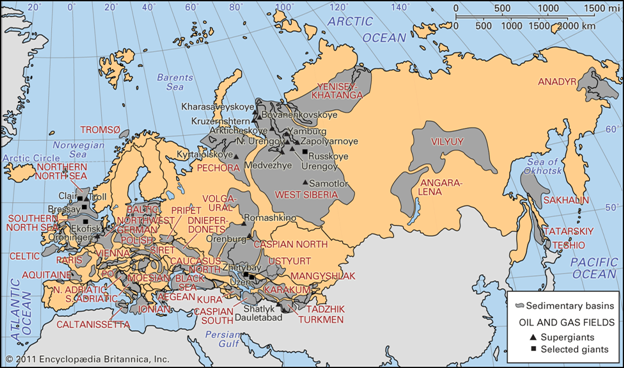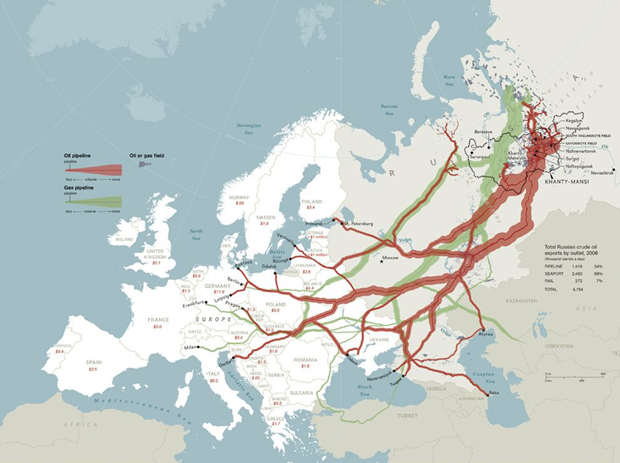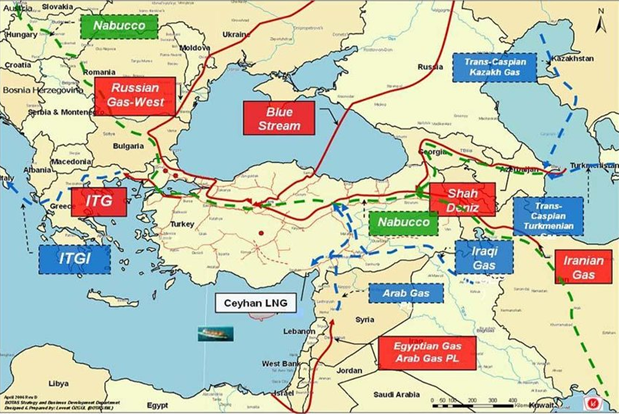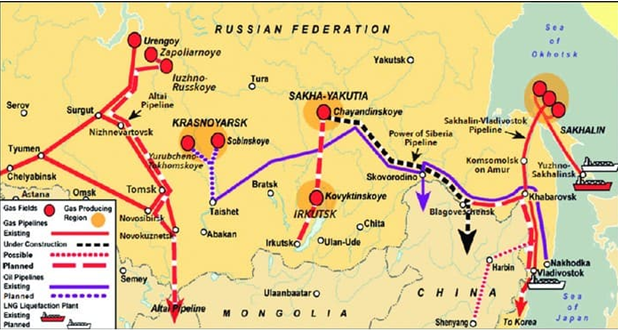By Amit Sinha
New Delhi, Dec 5 (UNI) China and Russia have had a blow hot blow cold political relationship.
Up until the early seventies China and Russia were cold war allies and then it switched the other way. China and The United States became trading partners and the partnership grew from strength to strength.
Meanwhile, the Soviet Union collapsed and by the year 2000 Russia was in the doldrums facing severe erosion in strength. Since then Russia has turned around and has regained strength. In spite of repeated US sanctions Russia has reemerged as a force to reckon with and oil & gas has been central to it.
Russia holds the largest natural gas reserves in the world, with more than half of them located in Siberia. Over 70% of the country's reserves are currently held by Gazprom, a state-owned company. Russia holds 1,688 trillion cubic feet (Tcf) of proven gas reserves as of 2017, ranking 1st in the world and accounting for about 24% of the world's total natural gas reserves of 6,923 Tcf. Russia has proven reserves equivalent to 102.3 times its annual consumption. In addition, Russia is one of the largest crude oil producers in the world.

The most developed ones are the ones in Western Siberia and Yenisey Khatanga. From here, Russia has built an extensive pipeline system to supply to European countries. The USSR was a reliable supplier to Northern Europe even during the cold war years and any other choice is not economical for Europe. This makes Russia a natural choice. However, energy security requirements and other political considerations makes Europe look at other alternatives including LNG. The United States also has an interest in selling its fracking output to Europe. Europe also receives supplies from Central Asia via pipelines and from the Gulf producers via LNG terminals (mainly Southern Europe).
The Russian pipeline system ran through Ukraine, a legacy of the cold war, and it was a weak spot for Russia particularly as relationships soured with Ukraine and NATO became more interested in Ukraine. It may be noted that Ukraines location was strategically very strong, although it has no Natural Gas of its own.

Over the last 15-20 years Russia has built alternative pipelines to bypass Ukraine and it is likely that Ukraine will cease to be a thorn in its flesh in a few years. The notable ones are
Nordstream1&2 – Nord Stream is a system of offshore natural gas pipelines from Russia to Germany. It includes two lines running from Vyborg to Lubmin near Greifswald forming original Nord Stream, and two lines under construction running from Ust-Luga to Lubmin termed Nord Stream 2. In Lubmin the lines connect to the OPAL line to Olbernhau on the Czech border and to the NEL line to Rehden near Bremen. Nord Stream is owned and operated by Nord Stream AG, whose majority shareholder is the Russian state company Gazprom, and Nord Stream 2 is owned and will be operated by Nord Stream 2 AG, a wholly owned subsidiary of Gazprom.
Nordstream 1 became operational in 2011 and its 2nd line became operational in 2012. Nordstream2 was scheduled to be completed by 2020, but is a bit delayed. It should be ready by 2021. It may be noted that The United States and many NATO allies are opposed to Nordstream2. These pipelines connect Germany directly with Russian supplies and is a game changer for both countries. Nordstream1 has a capacity of 55 Bcm and Nordstream2 will double the capacity to 110 Bcm. Nordstream2 is facing political headwinds but it is likely that it will be a reality soon. About 90% of the construction is done.

Turkstream – Turstream (earlier named Bluestream) is another pipeline that Russia has built to bypass Ukraine. It reaches Turkey directly, submerged in the Black sea. It may be noted that Turkey is a NATO ally. Apart from undermining Ukraine, it builds a base for future supplies into EU via Turkey and Turkey would benefit from the transit fees. Turkey is also a hub for Natural Gascoming in from Azerbaijan destined for Europe. Turkey is also a fairly large economy with its own Natural Gas demand. Turkstream became operational in 2019. The pipeline has two lines with a total capacity of 31.5 billion cubic meters.

Over here, Turkey and Ukraine become competitors for supplying Russian gas to Europe. The equation becomes even more intriguing because Turkey is also the hub for Central Asian gas entering Europe. Additionally, Israel has discovered massive off-shore gas near Haifa and is a contender to deliver to Southern Europe. It can potentially develop a pipeline bypassing Turkey.
This is however, not all that Russia is offering. It has eastern Siberian gas fields and it is ideally positioned to supply to China. The Chinese demand and Russia’s geography are creating an irresistible solution for both countries. The first of the two mega projects is the Power of Siberia. It’s a massive pipeline that branches into China. It also moves further to the Russian coast that can deliver it to LNG terminals for further supplies to countries like Japan and Korea.
Russia and China signed a 30-year gas deal worth $400 billion which was needed to make the project feasible. Construction was launched on 1 September 2014. It started supplying Natural Gasto China from December, 2019. The capacity here will be 61 Bcm of which 38 Bcm will go into China. This should be at full capacity by 2025. In one stroke China becomes one of the most important customers for Russian gas, at par with EU.
The next big one is the Altai gas project. This is still at the planning stage and may take 8-10 years to be in place. However, the scope here is also pretty large and definitely adds very significantly to china’s energy security requirements. This will be another 30 Bcm pipe that can be created. This one is from the western Siberian gas fields. The future of this project is largely dependent on China’s assessment of its future requirements and the negotiations that would follow.

The dramatic change in the equation between Russia and China has largely come about because of Natural Gasrequirements of China and Russia’s ability to service it. In very significant ways it challenges the existing geopolitics of the world. China has the strength to do a Yuan-Ruble deal with Russia and overcome any US sanctions. In time the economic logic of Russian gas may be irresistible for Japan and Korea, too.
Russian geopolitical considerations and acceptance of vulnerability make long-term Russian energy policies more China dependent. Russia seeks diversification among Asian energy buyers, but its focus has increasingly been on China. Other Asian countries are, at the moment, long shots. Western sanctions imposed in 2014 for Russia’s role in Ukraine accelerated this Eastern pivot of Russia.
Moscow’s energy policies toward Beijing with its pipelines and long-term agreements are permanent arrangements that resemble strategic partnership policies. While China is eager to increase energy relations with Russian companies, it will also ensure that it does not become too dependent on one supplier. While Russian should be concerned over its increased dependence on China in the East, it is secondary to expanding Russia’s customer base beyond the European market, which is susceptible to political earthquakes and American pressure. Water rich eastern Russia is also a potential ground for future Chinese investments in industrial scale farming. China’s demand on its water resources is huge and it will likely require alternatives in the near future.
China will continue to have its LNG terminals on the South China Sea. However, as is evident, its reliance on LNG will be significantly lower as pipeline fed natural gas will grow its share.
(Disclaimer: The writer is an Adjunct Faculty at Jindal Global Business School. Views, thoughts, and opinions expressed in the write-up belong solely to the author.)
UNI AMIT SB 1141